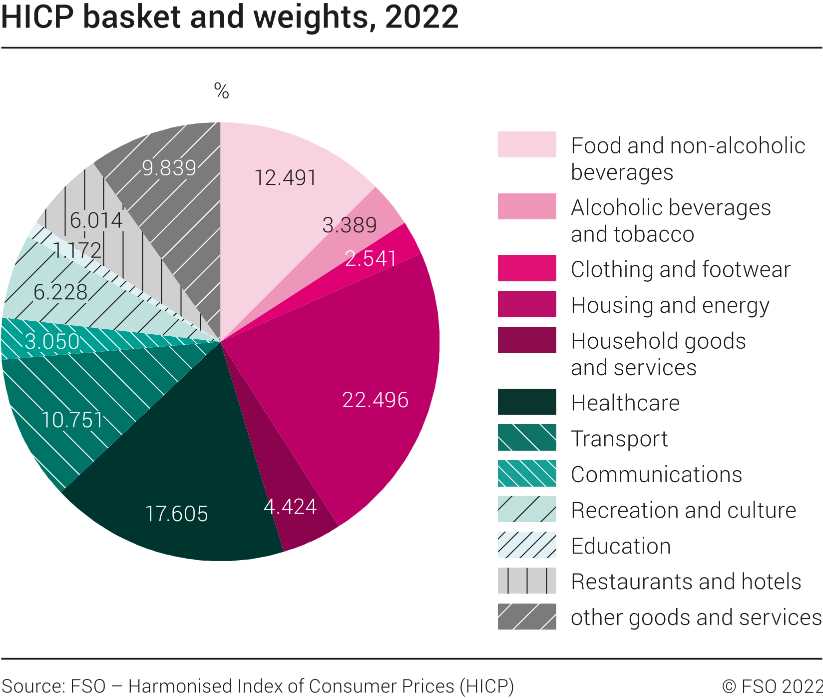What is Harmonized Index of Consumer Prices (HICP)?

The Harmonized Index of Consumer Prices (HICP) is an economic indicator that measures the changes in the prices of goods and services purchased by households. It is used to track inflation and is considered a key measure of price stability in the European Union (EU).
The HICP is calculated by collecting price data from a representative sample of goods and services across different categories, such as food, housing, transportation, and education. The prices are weighted based on their importance in the average household’s consumption basket.
The HICP is harmonized across EU member states, which means that the methodology and data collection process are standardized to ensure comparability between countries. This allows for a consistent measurement of inflation across the EU, facilitating economic analysis and policy-making.
The HICP is published on a monthly basis and is widely used by policymakers, economists, and financial market participants to monitor price developments and assess the effectiveness of monetary policy. It provides valuable insights into the overall health of the economy and helps to guide decision-making.
In addition to its role in monitoring inflation, the HICP is also used for various other purposes, such as calculating the real GDP growth rate, adjusting social benefits and pensions, and determining the allocation of funds within the EU budget.
Overall, the Harmonized Index of Consumer Prices is a crucial tool in macroeconomics that allows for the analysis and comparison of price developments across countries, providing valuable information for economic decision-making.
Definition and Purpose of HICP

The Harmonized Index of Consumer Prices (HICP) is a measure of inflation that is used to compare consumer price levels between countries in the European Union (EU). It provides a standardized and comparable index that allows for the analysis of price changes in different countries and across different time periods.
The purpose of the HICP is to provide policymakers, economists, and researchers with a reliable and consistent measure of inflation that can be used for macroeconomic analysis and policy formulation. By measuring changes in consumer prices, the HICP helps to assess the impact of price fluctuations on the purchasing power of consumers and the overall stability of the economy.
The HICP covers a wide range of goods and services that are representative of the consumption patterns of households in each country. This includes items such as food, housing, transportation, healthcare, education, and recreation. The weights assigned to each item in the index are based on the average expenditure patterns of households, ensuring that the index accurately reflects changes in the cost of living.
The HICP is calculated using a weighted average of price changes for each item in the index, with the weights reflecting the relative importance of each item in household budgets. The index is updated on a regular basis to reflect changes in consumption patterns and price levels.
One of the key features of the HICP is its harmonization across EU countries. This means that the same methodology and standards are used to calculate the index in each country, allowing for meaningful comparisons of inflation rates between countries. This harmonization is important for policymakers and researchers who need to understand the impact of monetary policy and other factors on inflation across the EU.
Importance of HICP in Macroeconomics
The Harmonized Index of Consumer Prices (HICP) plays a crucial role in macroeconomics as it provides valuable information about the overall price level and inflation in an economy. It is a key indicator used by policymakers, economists, and analysts to monitor and analyze changes in consumer prices.
One of the main reasons why HICP is important is its ability to measure inflation accurately. Inflation refers to the sustained increase in the general price level of goods and services over time. By tracking changes in consumer prices, HICP allows policymakers to assess the impact of monetary and fiscal policies on inflation and make informed decisions to maintain price stability.
HICP is also used to compare price levels and inflation rates across different countries. As it is harmonized, meaning it follows a standardized methodology, it enables international comparisons and facilitates the analysis of inflation differentials between countries. This information is crucial for policymakers and central banks to understand the economic performance of their country in relation to others and make appropriate policy adjustments.
In addition, HICP is used to calculate the inflation rate used in the deflation of nominal variables. Deflation refers to the process of adjusting nominal values for changes in prices to obtain real values. This is crucial for accurately measuring economic indicators and making meaningful comparisons over time.

Emily Bibb simplifies finance through bestselling books and articles, bridging complex concepts for everyday understanding. Engaging audiences via social media, she shares insights for financial success. Active in seminars and philanthropy, Bibb aims to create a more financially informed society, driven by her passion for empowering others.
